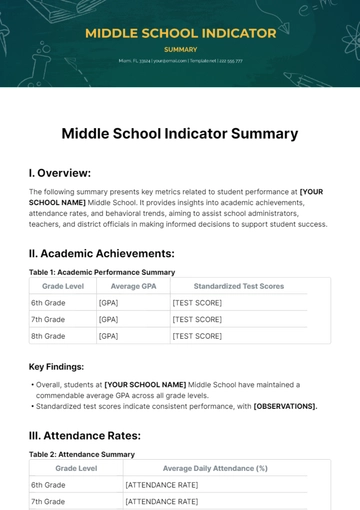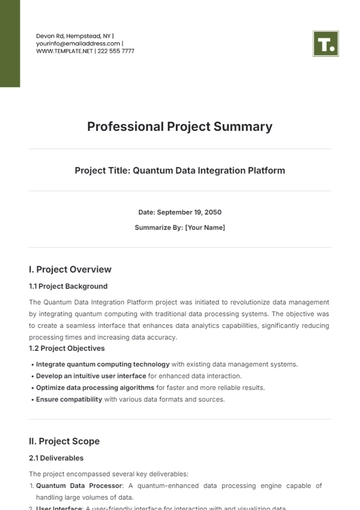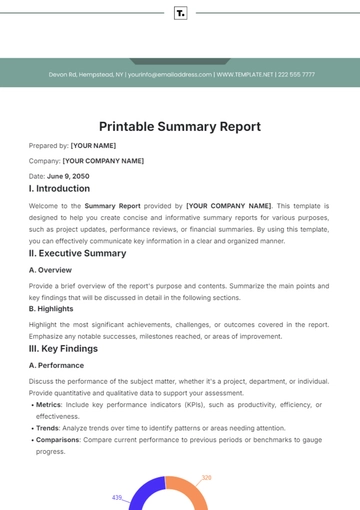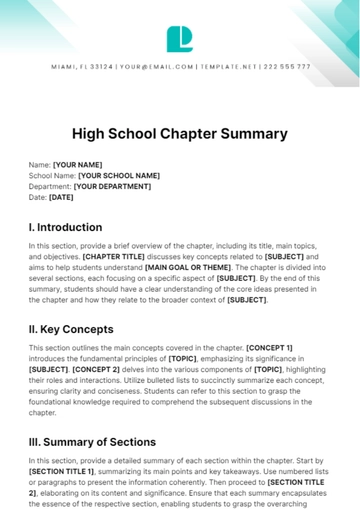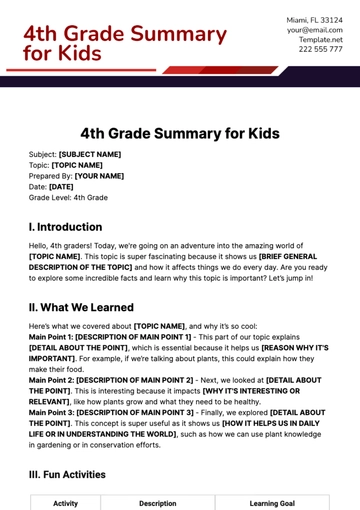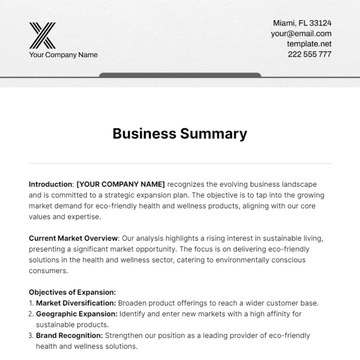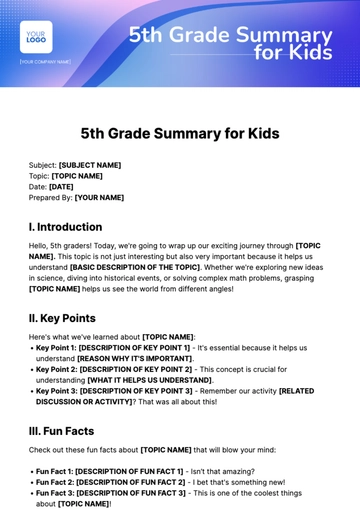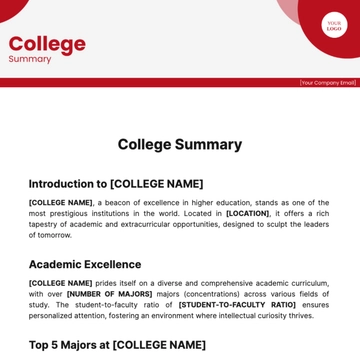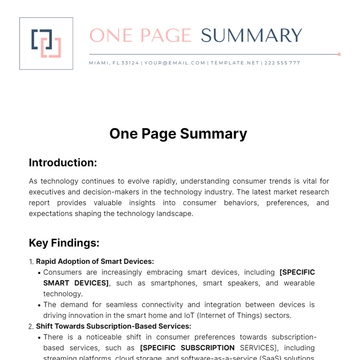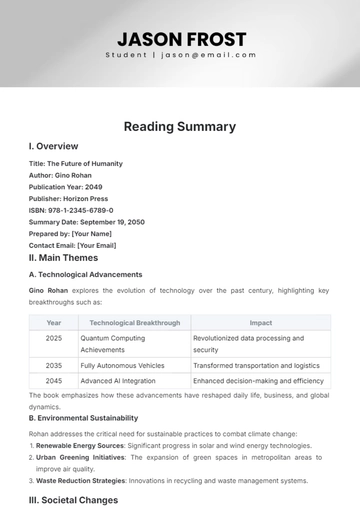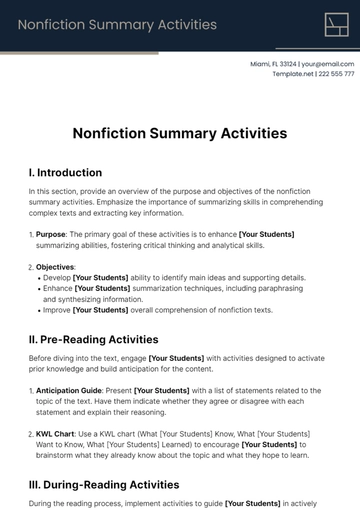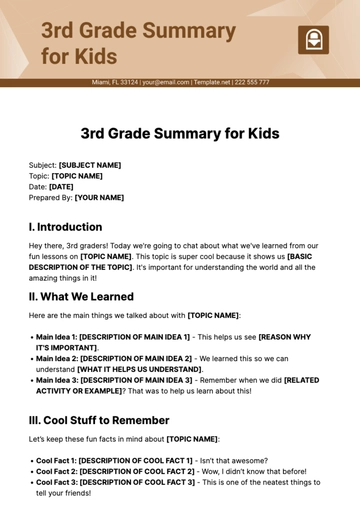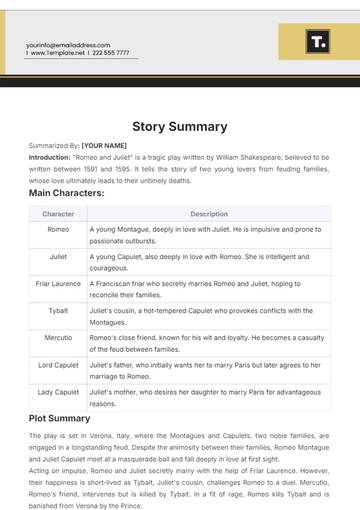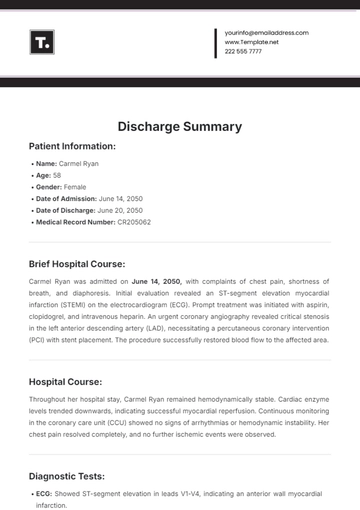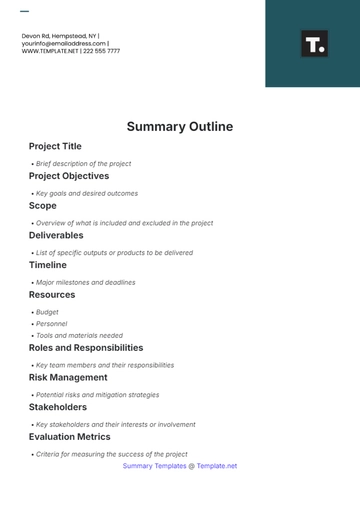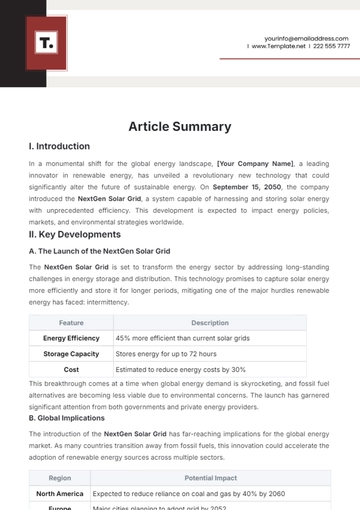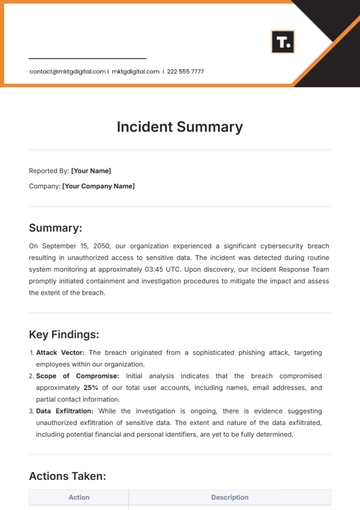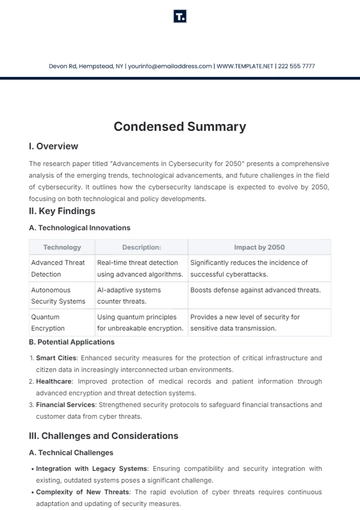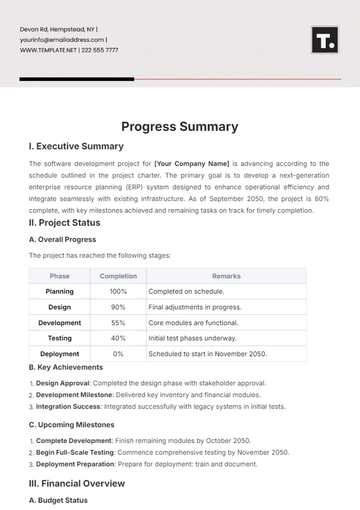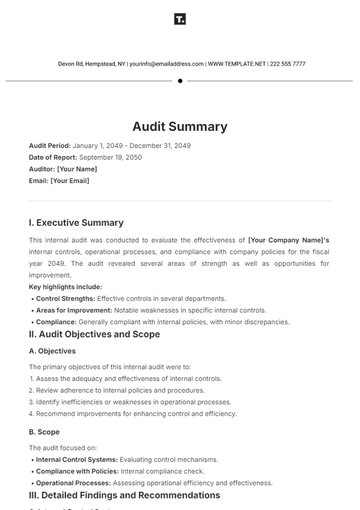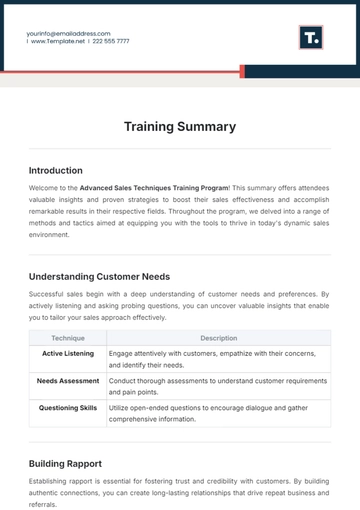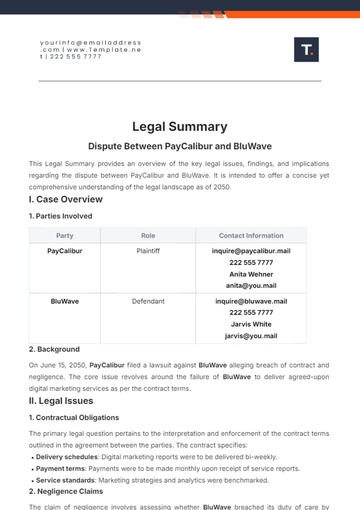Free Bible Summary
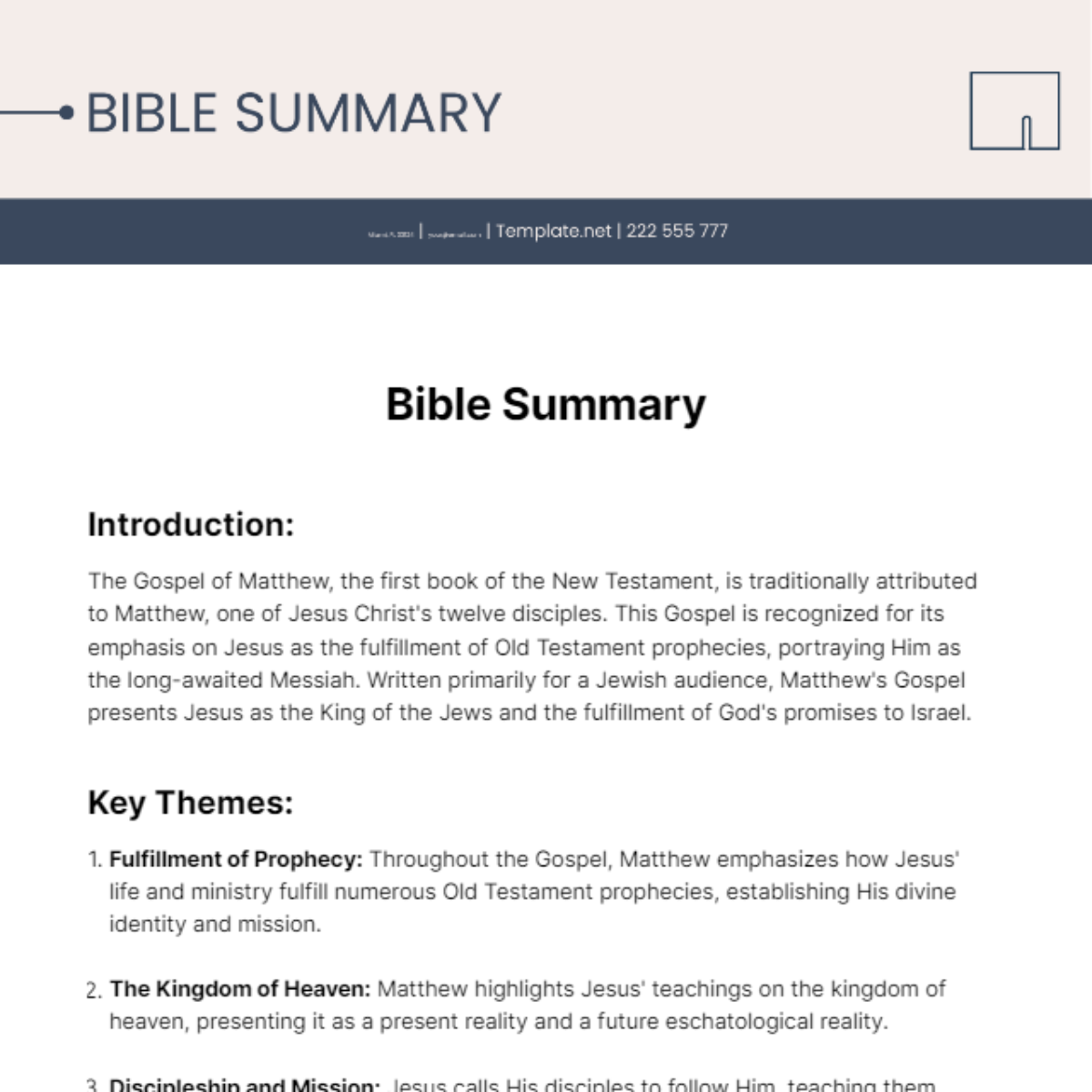
Introduction:
The Gospel of Matthew, the first book of the New Testament, is traditionally attributed to Matthew, one of Jesus Christ's twelve disciples. This Gospel is recognized for its emphasis on Jesus as the fulfillment of Old Testament prophecies, portraying Him as the long-awaited Messiah. Written primarily for a Jewish audience, Matthew's Gospel presents Jesus as the King of the Jews and the fulfillment of God's promises to Israel.
Key Themes:
Fulfillment of Prophecy: Throughout the Gospel, Matthew emphasizes how Jesus' life and ministry fulfill numerous Old Testament prophecies, establishing His divine identity and mission.
The Kingdom of Heaven: Matthew highlights Jesus' teachings on the kingdom of heaven, presenting it as a present reality and a future eschatological reality.
Discipleship and Mission: Jesus calls His disciples to follow Him, teaching them about the demands and rewards of discipleship and sending them out to proclaim the Gospel to all nations.
Ethical Teaching: The Sermon on the Mount (Matthew 5-7) contains Jesus' ethical teachings, including the Beatitudes and instructions on topics such as love, forgiveness, and righteousness.
Conflict and Opposition: Matthew portrays Jesus encountering opposition from religious leaders and others who reject His authority and message, leading to His eventual crucifixion.
Structure:
The Gospel of Matthew is structured into five main sections, each containing narrative material followed by discourses or teachings by Jesus:
Section | Content |
|---|---|
1. Birth and Early Life | Genealogy of Jesus, Nativity Narrative |
2. Ministry in Galilee | Baptism, Temptation, Sermon on the Mount |
3. Ministry in Galilee and Beyond | Miracles, Parables, Commissioning of the Twelve Disciples |
4. Opposition and Rejection | Conflicts with Religious Leaders, Parables of Judgment |
5. Passion and Resurrection | Triumphal Entry, Last Supper, Crucifixion, Resurrection |
Notable Events and Teachings:
Birth and Genealogy (Matthew 1-2): The genealogy of Jesus traced back to Abraham and David, the visit of the Magi, and the escape to Egypt to avoid Herod's massacre of infants.
Sermon on the Mount (Matthew 5-7): Jesus delivers His most famous sermon, teaching on topics such as the Beatitudes, salt and light, love for enemies, prayer, and trust in God.
Parables of the Kingdom (Matthew 13): Jesus uses parables to illustrate the nature and growth of the kingdom of heaven, including the parables of the sower, mustard seed, and wheat and weeds.
Peter's Confession and the Transfiguration (Matthew 16-17): Peter acknowledges Jesus as the Christ, the Son of the living God, and witnesses Jesus' transfiguration on the mountain.
Great Commission (Matthew 28:16-20): Jesus commissions His disciples to make disciples of all nations, baptizing them and teaching them to obey all that He has commanded.
Conclusion:
The Gospel of Matthew presents Jesus as the long-awaited Messiah, fulfilling Old Testament prophecies and establishing the kingdom of heaven. It calls readers to discipleship, obedience to Jesus' teachings, and proclamation of the Gospel to all nations. Through its narrative, teachings, and emphasis on fulfillment, Matthew's Gospel remains a foundational text for Christians worldwide, offering insight into the life, ministry, and significance of Jesus Christ.
Summarized By: [YOUR NAME]
- 100% Customizable, free editor
- Access 1 Million+ Templates, photo’s & graphics
- Download or share as a template
- Click and replace photos, graphics, text, backgrounds
- Resize, crop, AI write & more
- Access advanced editor
Discover the ultimate Bible Summary Template on Template.net! Crafted for seamless comprehension, it's fully editable and customizable, ensuring effortless adaptation to your needs. Explore its depth, simplicity, and versatility, all editable in our intuitive Ai Editor Tool. Unlock the power of succinct storytelling with ease and precision.
